A test case brought by the FCA against eight insurers could have significant consequences for insurers, brokers and policyholders. We report on the latest from the High Court…
16.22: That’s it for the day. The FCA’s submission ends tomorrow
16.16: Hiscox argues that access is a physical or legal inability to access only, Edelman says. It does not regard government restrictions on customers being able to access as being relevant. Edelman says Hiscox has also been denying claims on this basis
16.11: Next up, non-damage denial of access
16.10: Edelman says Hiscox has made an ’outlandish submission’ to the court. They’ve been declining claims on this basis, he says
16.08: Edelman suggests Hiscox using case law to apply a ’dictionary definition’ of the word interruption, rather than apply the policy as it was intended
16.01: Hiscox needs to reflect on the extremity of their position. It undermines the commercial purpose of their policy, argues Edelman
16.00: The word ‘interruption’ being taken too far by Hiscox. What activity is leftover after that interruption does not have to be ‘nothing’, argues Edelman. If your normal way of business is at an end, then that should qualify, he adds. A relevant cessation could involve any restriction of busines, Edelman says
15.55: Edelman argues that if you can’t carry out just one defined separable activity, that’s enought to trigger the policy
15.52: The crux of Hiscox’ argument, according to Edelman, is that if any part of the premises can be used, then there’s no restriction on conducting business from it
15.47: Another example Edelman gives: if a school is giving lessons via Zoom, and the teacher has to come into school to use the Zoom facility, that does not mean the school is operating as normal, as he says Hiscox suggests
15.45: If your turnover has been slashed to 25% of prior turnover, because you can only serve takeaways, then it’s ‘hard luck’, says Edelman of Hiscox’s policy. This is ’totally uncommercial and can’t be what was intended’, he says
15.41: If you’re simply unable to use a restaurant area as a restaurant, does that really mean that you can’t use the premises, asks Edelman? In other words, Hiscox is arguing that if any part can be used, then your business is not being ‘interrupted’ and therefore cover does not apply
15.37: Hiscox argument that if any part of a premises can be used, then there is no restriction on its use. I.e, if a premises is being used for the distribution of takeaway meals. ’This is a holy uncommercial construction of words in those contexts’, Edelman says
15.32: These are unusual circumstances, and one has to apply the policy in a sensible way - Edelman
15.28: The premise of the restriction was not only the known, but the known unknown, Edelman adds
15.27: To be covered, there has to be something that affects the premises. That is the requirement of locality. The further away the outbreak, the less likely it is to result in restrictions being placed on the premises, says Edelman
15:25: Break time over. The last leg of the day awaits…
15.15: Covers are local, specific to the insured, or the premises, referenced Edelman. It says nothing about the locality of the occurance.
15.09: ‘It is known from its associates’ - that maxim is utterly misplaced said Edelman, it is a principle that applies when you have a mist of words and there is a discernable intention as to what the words mean. Each insuring clause has its own range and insuring matter. It has to have some connection to the insured premises, but this can vary from clause to clause. Here, it is the inability to use the premises.
15.07: Wide area matters can affect the insured, as well as the whole nation, for example storm damage (the Beast from the East). As long as it impacts the insured premises, it is covered, said Edelman.
15.02: The locality requirement is satisfied because it has to have the specified impact on the insured’s premises. Normally, only a local outbreak would have such an effect, but it does not detail this local element in the policy wordings. Edelman said this Hiscox policy wordings applies no matter where the occurance is. The policy does not say the occurance only has to be local. Hiscox made a calculated risk that only local occurance will cause this impact - this is ‘their bad luck’ said Edelman.
15.00: The concept of an occurance all smacks of something local, according to Hiscox wordings said Edelman. The policy doesn’t restrict cover due to the geographical location of the occurance, however. An outbreak is in itself an occurance. Edelman believes this could be contemplating the outbreak of a new contagious disease. An occurance can refer to an outbreak.
14.59: No vicinity limit on the ’occurance’ wording, however Hiscox said there has to be some requirement of locality, although the wordings do not specifiy where the occurance has to be.
14.58: ‘Inability to use’, ‘restrictions imposed’ and ‘occurance’ are the main issues with the public authority clause. The insured peril is the combination of all these events, said Edelman.
14.55: Hiscox’s public authority clause is going to be addressed first by Edelman.
14.54: Edelman QC is now moving on from trends clauses to discuss Hiscox’s individual policies.
14.51: What is implicit in the clauses? It has to be realistic, added Edelman QC. If the clause is contemplating a certain type of situation, it has to be realistic about what it is contemplating. For example, a policy with a 25-mile radius clause. This is contemplating a disease of pandemic or epidemic-type scale among its contemplations, but this is not listed in policy exclusions.
14.47: Do you extract the effect of the disease on turnover before it became a notifible disease? Are insurers covering a disease’s notifiability or an outbreak of a notifible disease, asked Edelman? Until it is notifible, the disease will not trigger the cover, however what are these clauses designed to do? Prior to a disease being labelled notifible, businesses were still losing money - does this require an adjustment to the trends clause then? The trends clause should be trying to match up what would have happened but for the manifestation of the disease, including in the days before it was defined as a notifible disease. Business interruption should be putting businesses back where they were prior to the interruption.
14.44: To get the insurance, you need all the ingredients, said Edelman QC. It’s not insuring against the disease that caused the restrictions - ‘it’s a red herring of insurance’.
14.41: Edelman referenced the Scilly Isles, which reported no cases of Covid-19, however it is still subject to restrictions and caught in the ‘whirlwind’ of the pandemic. Businesses here would not receive a pay out because they are not within a determined mile radius but they have still suffered business interruption losses because of coronavirus. Insurance should treat businesses as if nothing has happened.
14.39: Insurers were insuring against the risk of a notifible disease, which could have been near an insured’s business, said Edelman. If it was everywhere, then policyholders should get cover - it is what the clause is contemplating could happen, the risk that insurers are imagining. Edelman QC said it is in the risk, negated the benefit of more limited outbreaks.
14.37: Use of the word ‘trend’ is ‘illuminating’ said Lord Justice Flaux.
14.34: Past figures are not always accurate to determine future earnings, said Edelman QC. For example, a resturant that has suffered a fire, that also loses its head chef could see its revenue impacted because of the staff change rather than the damage.
14.31: ‘Trend adjusted’ is a defined term used within business interruption claims, means adjustments will be made to figures depending on the trend of business and factors that impact the business before or after the damage.
14.28: Edelman QC gave the example of a business that may have shut for maintenance following a fire - claiming for that specific time period would be a fraud on the insurance as the business would have been closed anyway.
14.24: If the trends clause is about the extraneous factors, the quantification should be consistent. How trends clause operate needs exploring, said Edelman. It’s looking at things that are extraneous to what has caused the loss.
14.21: Regarding trends clauses, the cause of the damage is then excluded, said Edelman. If this is the premise, should the primary causation argument on BI losses operate in the same way? Trends clause is only adjusting quantum based on factors other than the cause of the loss. When there is a composite clause, you don’t cherry pick the clauses as this would be inconsistent.
14.20: Another error in the approach is to focus on the word damage - it doesn’t say the cause of the damage - but the wordings also do not define ’special circumstance’. What type of circumstance is intended here, asked Edelman QC?
14.15: Insurers have to pay each hotel the windfall profits of being the only place open after hurricane damage - is this commercially sensible asked Edelman QC? Or is it sensible to ignore the hurricane, and be compensated as if business had continued as usual, as is this not what business interruption insurance is there for?
14.13: In Prudential, Edelman said that the claimant should not make a ‘windfall profit’.
14.11: In the Orient Express case, the insured peril was labelled incorrectly according to Edelman.
14.09: Regardless of what is happening in the wider world, the property still cannot be used and therefore the ‘source of income is over’, explained Edelman.
14.06: Failure to grasp what the policy in the Orient Express case is doing with an all risks policy, said Edelman. For example, a hurricane is a peril that can cause damage that is not excluded within the policy. Lord Justice Flaux discussed the difference between a policy trigger versus an insured peril. An insured peril here are all things that could cause damage to the building as a result of a fortuitous event.
14.03: Discussing the Orient Express case, Edelman said this sought to strip out the consequences of extraneous circumstances as well as the peril that caused the damage - the relevant insured peril is the damage, not the cause of that damage. All the insured has to prove is that the damage occured. Misunderstanding of what an all risks policy covers.
13.59: Edelman described the past Orient Express case as ‘baggage’ - special circumstances here included the cause of the damage. Extraneous matters include what caused the damage in the first place in this case law, which is ‘surprising’.
13.56: Edelman kicks off the afternoon session discussing trend clauses, adding that the quantification clause can’t be a ‘knight in shining armour’.
13.54: The test case resumes after lunch, with Edelman confirming that the order of the interveners has been agreed and that extra time will be awarded next week in order to give more time for a response.
12.35: ”Boundaries of insured perils need not be boundaries of what is subtracted,” – Mulcahy QC, she linked in the warnings surrounding 9/11 and the warnings for Covid-19.
12.33: Here the cover premise is on the emergency or the disease [Covid-19] which is what may be identified narrowly as ’the peril’, if [something] is uninsured but not excluded it must be considered – Mulcahy QC
12:28: QBE talks in its defence of the importance of taking ’counterfactuals’ in a precise location – Mulcahy QC
12.24: Mulcahy QC debates the exclusions argument, she refers to a case related to the 9/11 attacks, she pointed out “underlying causes are not covered by perils” – Mulcahy QC added the terrorist activities were uninsured not excluded
12.15: Mulcahy gives an example of a BI claim as a result of 9/11 but Lord Justice Flaux says 9/11 was an act of war. Mulcahy added the losses for 9/11 were excluded
12.08: But what is the burden on the insured? What do they have to prove? Mulcahy QC asks what are the defendants saying exactly? They must be precise – the position isn’t clear
12.06: QBE seems to accept there is a burden of proof says Mulcahy QC, but Lord Justice says he struggles to see why burden of proof matters
11.58: Mulcahy QC says the court has to approach ‘counter factuals’ bearing in mind realism
11.42: Mulcahy QC says that the ‘but for’ test does not always lead to the correct findings, offering some case law examples demonstrating how on occassion the test leads to some ‘absurd’ results
11.37: Insurers are claiming that if there are two independent causes for an event and one is excluded, then the policy should not pay out. But Mulcahy QC says that this is not necessarily the case and that in some cases the insurers should be liable.
11.33: The FCA case will hinge on whether excluded and covered causes are classed as inter-dependent, and how that affects any exclusion under the policy wordings
11.13: The question, Mulcahy QC says, is whether those either of those causes are covered, whether either is excluded, and whether either is sufficient to trigger a claim
11.12: Case law shows how there can be two effective causes and that where neither is excluded, either can serve to trigger the policy if it is covered in the policy wording, Mulcahy QC explains
11.03: Mulcahy QC says that you cannot ‘reverse out’ government action from triggering a policy because the nature of a notfiable disease means that action of such a type would always be expected
11.00: Inconsistency seems to be the buzzword of day two of this test case as Mulcahy QC continues to dissect the different insurer defences
10.57: Mulcahy QC says it is the FCA’s case that insurers ’did not intend to cut out or reduce recovery’ because policies were not drafted in the ‘exclusionary way’ insurers are claiming
10.51: Mulcahy QC says that the case hinges on the ’proximate cause’ of the claim, and whether that is enough to trigger the policy
Watch this case - it will prove important to consumer disputes further down the line, currently multiple businesses unable to repay consumers, possibly in part due to insurance issues. https://t.co/hRRi3h2vPd
— Kate Briscoe (@celestineLB) July 21, 2020
10.48: Well that’s the end of the FCA’s submission on causation, and we now turn to Leigh-Ann Mulcahy QC to hear the FCA’s case from a legal standpoint. Prepare yourself to hear a lot more about insurance contracts
10.44: Edelman QC continues to list the ‘counter factuals’ cited by insurers in their defences and how other policy triggers then come into play
10.35: Colin Edelman QC for the FCA says that there are ‘inconsistencies’ in the defences of different insurers, with insurers picking different ‘counter factuals’ to argue why the claim is not valid
10.30: Welcome to day 2 of the FCA’s business interruption test case. We shall be reporting on the most salient points throughout the day.
Missed yesterday’s proceedings? You can catch up on all the action from the first day of the hearing here.

Hosted by comedian and actor Tom Allen, 34 Gold, 23 Silver and 22 Bronze awards were handed out across an amazing 34 categories recognising brilliance and innovation right across the breadth of UK general insurance.
FCA business interruption test case
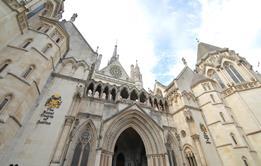
- 1
 Currently
reading
Currently
reading
FCA business interruption test case: Day 2 - as it happened
- 3
- 4
- 5
- 6
- 7
- 8



































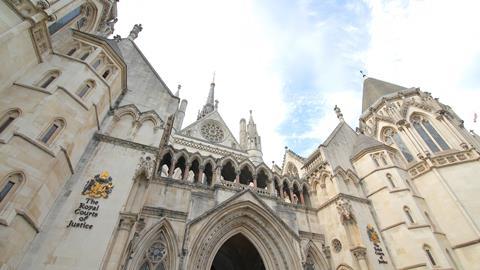

















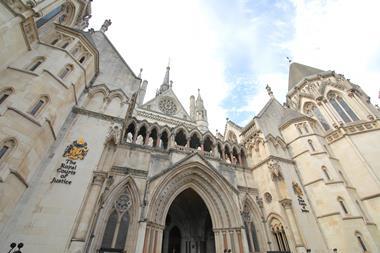
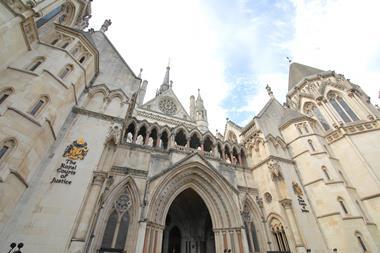
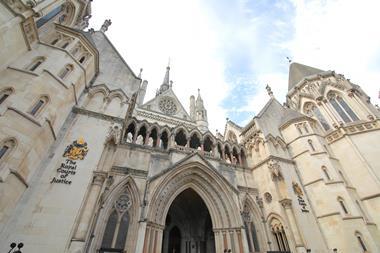











No comments yet